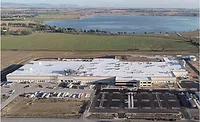Plant of the Year
J.M. Smucker wins 2020 Food Engineering Plant of the Year
Red-hot demand for ice-cold sandwiches drives J.M. Smucker’s growth
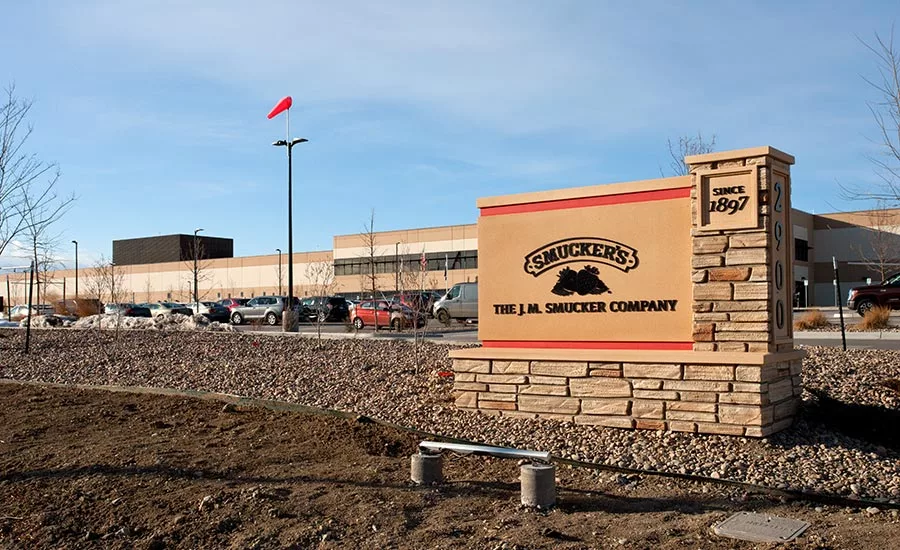
The J.M. Smucker Company’s focus on learning from experience helped it earn the 2020 Plant of the Year award for its Longmont, Colo., facility.
Exterior photos courtesy of Joel Eden/Joel Eden Photography
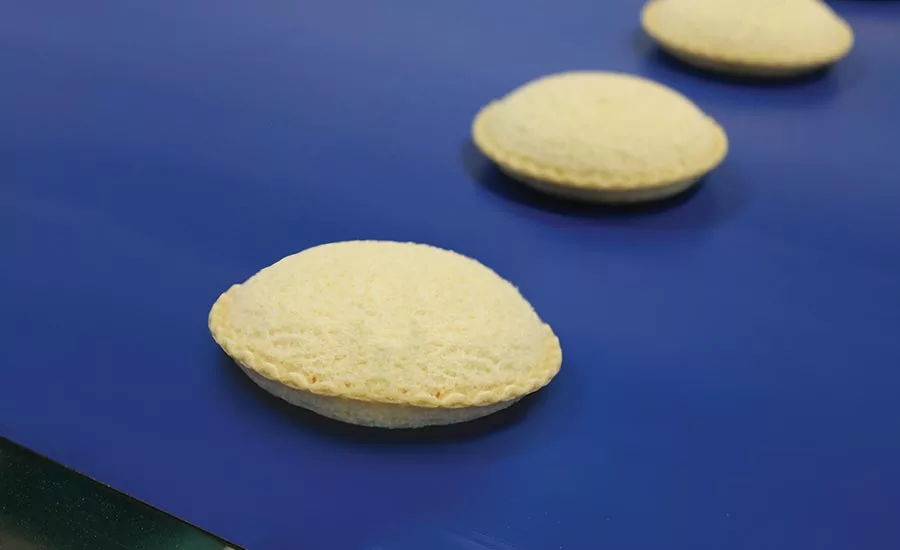
Sandwiches are filled and the edges crimped before they go into packaging and freezing.
Interior photos courtesy of The J.M. Smucker Company
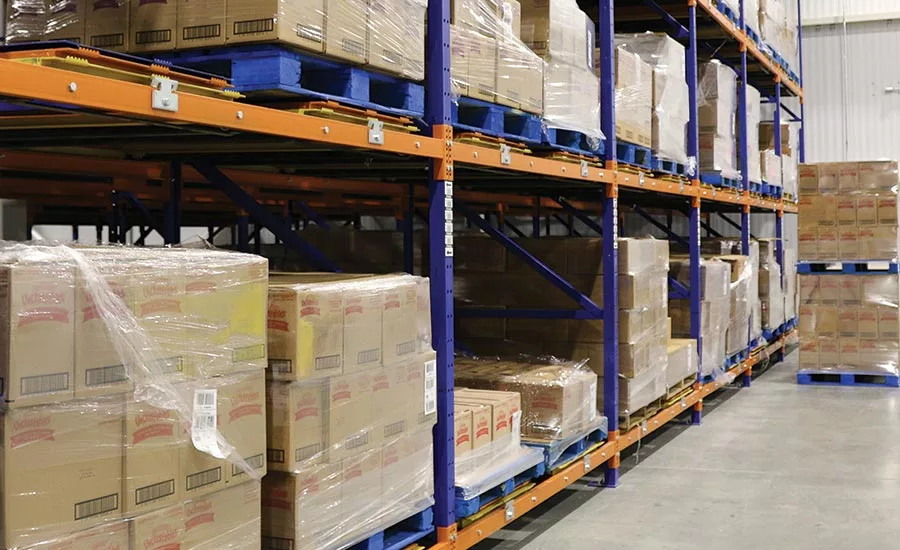
Ingredients such as gluten and salt are stored on pallets and loaded as necessary.
Interior photos courtesy of The J.M. Smucker Company
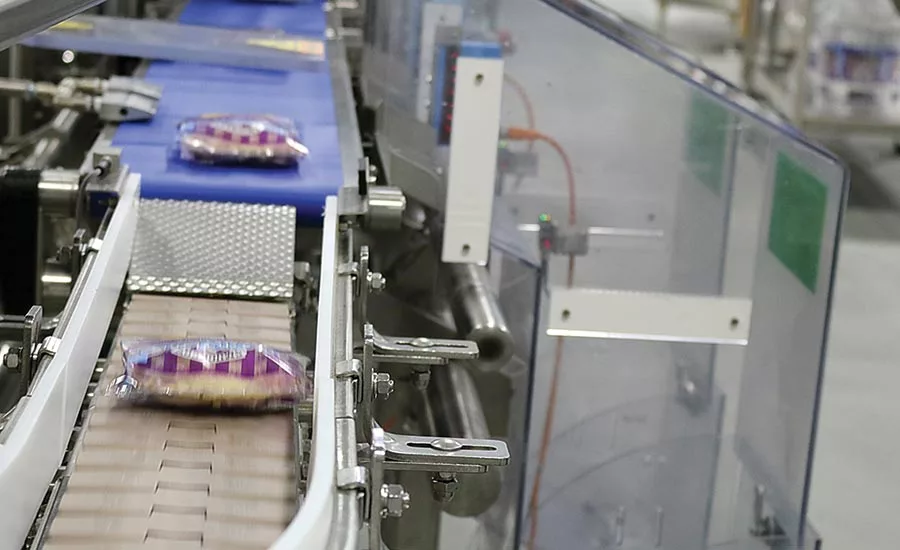
Finished sandwiches are individually wrapped and conveyed to a spiral freezer.
Interior photos courtesy of The J.M. Smucker Company

Because the sandwiches are individually wrapped, ingredient and nutrition information is printed on each wrapper.
Interior photos courtesy of The J.M. Smucker Company
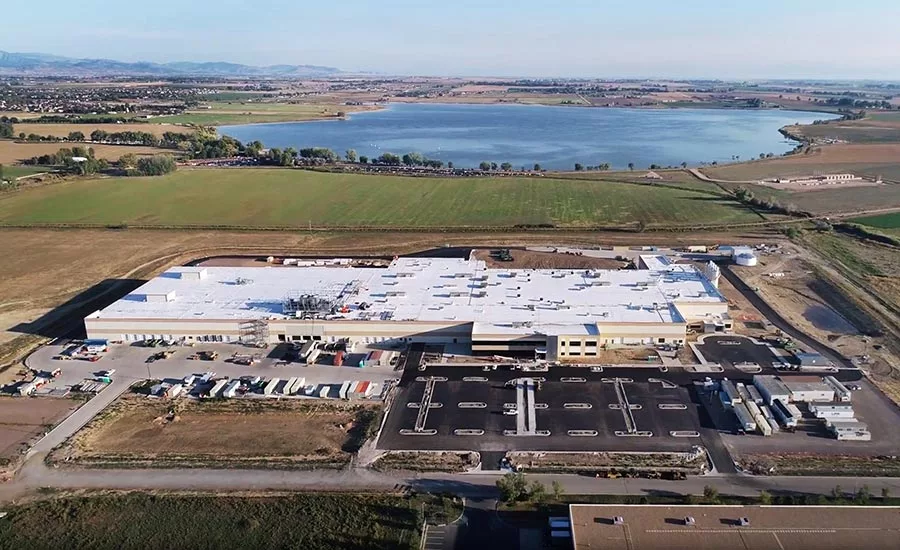
An aerial view of The J.M. Smucker Company’s Longmont, Colo. plant.
Photo courtesy of Dennis Group
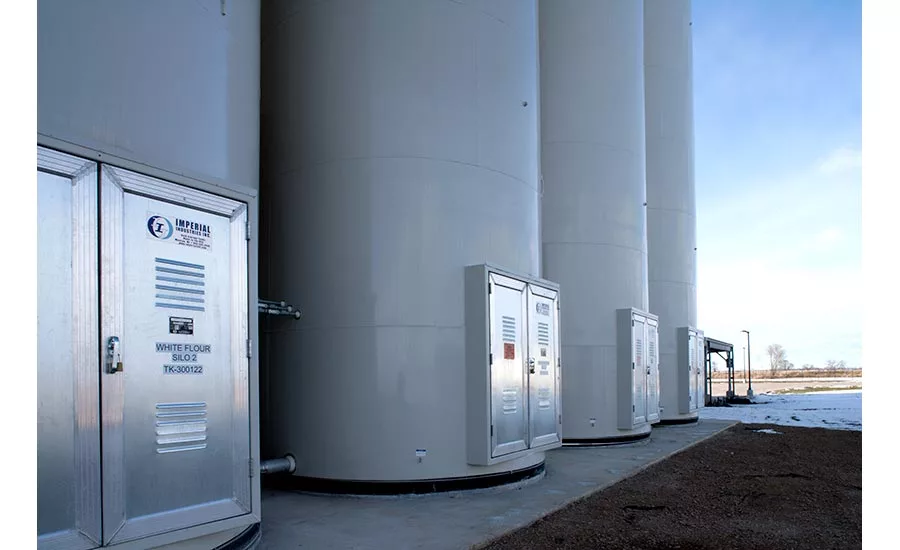
A close-up look at the storage silos for ingredients that are brought in by truck.
Image courtesy of Joel Eden/Joel Eden Photography
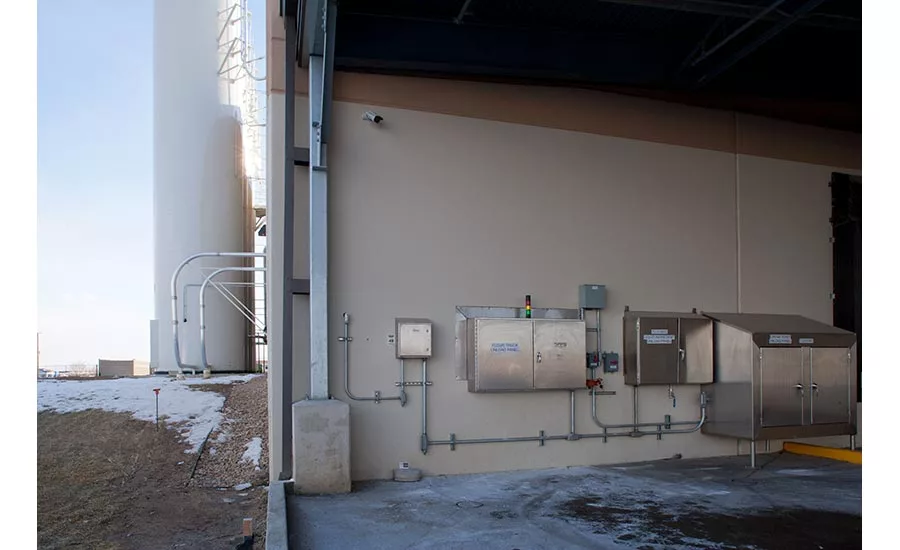
The unloading area for trucked-in ingredients.
Image courtesy of Joel Eden/Joel Eden Photography
Walk into the frozen foods aisle of your local grocery store and pick up a 10-count box of Smucker’s Uncrustables.
Now get 87 more boxes and stack them up. Those 88 boxes, 880 sandwiches in total, represent the output of The J.M. Smucker Company’s Longmont, Colo., facility—every minute.
Article Index:
The facility has earned the 2020 Food Engineering Plant of the Year award, and as you will see, it’s well deserved. Not only because the plant is an engineering and operating achievement, which it certainly is. But it’s also an indication of what a company can achieve when it embraces the idea that its people can always be learning, always looking for better ways to do things the company is already good at and never falling back on “but that’s the way we’ve always done it.”
The facility is a convergence of a product that is in high demand, company staff that embraced the challenges inherent in such a major project and a design-build firm that was able to adapt and adjust to an accelerated timeline.
Here’s the kicker: The overall project isn’t even finished yet. In fact, it’s just getting started.
The beginning
Since their debut, Uncrustables have become a staple of school lunches, trips to the beach and really any situation where a convenient peanut butter and jelly sandwich can come in handy. In fact, the sandwiches even had a moment in the spotlight during the California wildfires of 2018, when they were handed out in brown bags to firefighters.
The concept is simple enough: Buy a box of the sandwiches, keep them in the freezer and throw them in a lunch bag in the morning. By lunchtime, they’re thawed out and ready to eat.
That simplicity and convenience has fueled explosive growth for the company, with the product growing to more than $250 million in annual revenue—without advertising. And demand shows no signs of slowing down any time soon.
The company began making the sandwiches at a production facility in Scottsville, Ky in 2003. More than a decade later, demand was running ahead of what the Scottsville facility could produce, and the decision was made to build another, larger facility that would turn out hundreds of millions more sandwiches every year.
“We’ve always been playing catch-up with demand,” says Brad Borkowski, senior project manager, The J. M. Smucker Company.
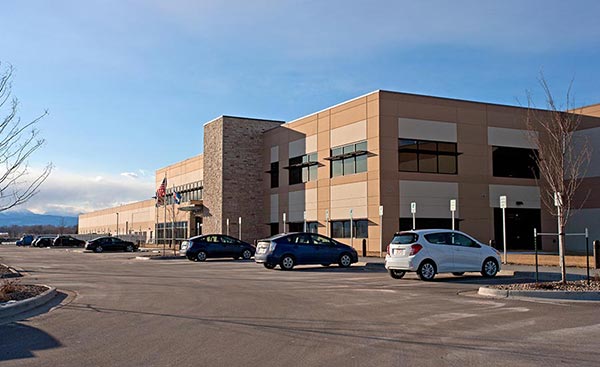
Image courtesy of Joel Eden/Joel Eden Photography
When looking for a site, Smucker and Dennis Group, the design-build firm on the project, had several important criteria in mind. Where ingredients would come from and where product would be shipped to, available workforce, and sufficient land (at least 60 acres).
“We had a narrow universe based on logistics,” says Mary Frances Stotler, project manager, Dennis Group. “Looking at where raw ingredients were coming from, where we were shipping finished products to, it was narrowed down to a 150-mile radius from Denver.”
A number of sites were considered, with four making the cut for full due diligence. After a full evaluation of the sites, Longmont was chosen, with one of the deciding factors being a $6.5 million incentive.
With the site chosen, the next step was turning the vision into reality, says Borkowski, who was the first Smucker employee sent to the site.
“It was just a farm field when I got here,” he says.
The project was originally divided into several pieces, with pauses built in between each step of the process to develop bakeries and packaging lines to meet production demand.
That was the original plan. After ground was broken in 2017, the reality quickly shifted due to the continued growth in demand. The timeline was compressed, with various project milestones being achieved much sooner than anticipated.
“A lot of the phases merged together instead of having clean breaks,” says Jeff Nagle, plant manager.
When the entire facility is built out, the plant will produce more than half a billion sandwiches yearly.
The compressed timeline presented a number of challenges for both Dennis Group and Smucker, and required careful management of each step of the process. As dates shifted or requirements changed, they created a cascading effect of other changes that would need to be accounted for. With thousands of contractors and close to a million labor hours involved in building the plant and bringing it online, resource management was the top priority, because a timeline change can’t always be solved by just throwing more people at the challenge.
“I can crowd 100 percent more people into any given area, but I don’t get 100 percent more output out of adding 100 percent more resources,” says Borkowski. “You have to be smart and try to understand where you’re getting the best value for the additional resources without driving your costs sky-high.”
Despite all of the challenges created by shifting timelines and trying to manage so many different potential trouble spots, the plant was completed and brought online in June of 2019. While the construction of Phase 2 is ongoing, the production of Phase 1 is fully up and running. The Longmont facility estimates it will produce 280 million Uncrustables yearly; when the entire facility is built out, the plant will produce more than half a billion sandwiches every year.
Step inside
Head north on I-25 out of Denver and take the exit for 119, then drive west. As you get closer to the Smucker facility, you’ll see it rise up out of the wide-open prairie, with the Rocky Mountains providing a picturesque background in the distance.
It’s not an extraordinarily tall building, and when you first approach it, it doesn’t seem to be all that big, even though officially it’s more than 400,000 sq. ft. Then you approach the front door, look to the left and realize that the building just keeps going and going.
Once inside, it’s quickly apparent that it is a production facility through and through. There’s a small reception area and office space, but the vast majority of the building is dedicated to the testing, baking and packaging operations.
Safety is a top of mind concern, with one of the first things visible as you enter the production area being a flat-screen monitor that shows how long since the last injury occurred. As Borkowski describes it, it’s a way to help employees embrace safety as a culture.
Visitors must, of course, wear smocks (blue for pre-kill, white for post-kill), safety goggles, hardhats, ear protection, hair nets and beard nets. No watches, jewelry or anything else that can get caught on a piece of equipment is allowed; when one visitor can’t remove a wedding ring that hasn’t come off for decades, he is given a glove to cover it. Even regular inkpens aren’t allowed. A replacement pen is provided that meets safety and potential contamination requirements.
Before you get to the bakery floor, there is a team room and a testing area. Each shift—the plant is a 24/7 operation—meets to go over real-time data and metrics from previous shifts. Any potential issues or challenges are addressed and a safety overview is conducted.
All ingredients are tested to ensure they meet quality standards.
Then you get into the bakery, and you start to really see where the company’s commitment to learning from experience pays off.
Baking up a storm
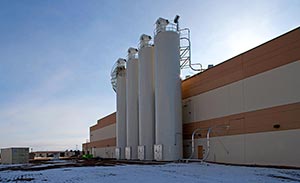
Flour comes in by the truckload, and is stored in silos that are taller than the building.
Ingredients that are needed on a smaller scale, such as gluten, salt and other proprietary ingredients, are stored inside the plant and loaded as needed. All the ingredients are combined in a custom-built mixer. The dough is formed into custom-built pans and then baked. Throughout the bakery process, everything is automated. Employees will remove dough or baked bread for testing, but otherwise everything is done via machinery.
The bakery produces tens of thousands of pounds of bread every hour, making it the largest single-line bakery in the world. It takes between 4-5 hours from the point that raw ingredients enter the mixer to when bread leaves the bakery and enters sandwich making.
Then things speed up.
A sea of sandwiches
Once the bread is cooled, it’s sliced and arrayed on a conveyor in rows, with several round pieces of bread in each row. As the sliced bread continues along the conveyor, nozzles dispense the fillings .
The peanut butter and jelly are made in Smucker facilities and shipped in for use. At this stage the sandwiches are crimped.
Vision inspection systems reject any finished sandwiches that have peanut butter or jelly where they are not supposed to be. Sandwiches that pass muster are then wrapped individually and conveyed to a spiral freezer.
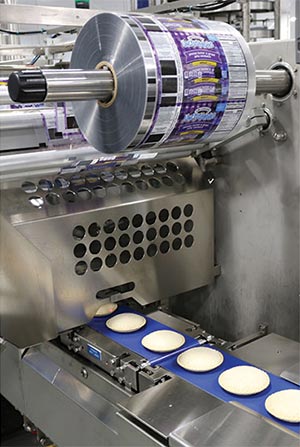
Freeze frame
Once the sandwiches come out of the sandwich making area they enter a spiral freezer. After about an hour in the freezing process, they are boxed (in 4-, 8-, 10- or 15-count boxes) and sealed, then palletized and conveyed to a 43,000 sq. ft. warehouse for storage. Product is held long enough for testing to be completed, then shipped out to distribution centers.
The freezing system is one small part of the plant’s overall sustainability and energy efficiency efforts. While production requirements do have an effect on just how much efficiency can be achieved, the plant was designed to take advantage of as many efficiency opportunities as possible. Among them are:
- Boiler feedwater is pre-heated by economizers
- Condensate is subcooled by process hot water
- Waste heat from air compressors preheats process hot water
- Condensing temperatures of the refrigeration systems vary
- Float traps are used to optimize hot gas defrost on evaporators
- And high-lumen low-energy LED light fixtures are used
“As the largest portion of the energy consumption of the facility, the process and utility systems always pose the greatest opportunity for efficiency gains,” says Stotler. “Our team started by exploring process and utility efficiency, and then worked our way out to the building envelope.”
Cleaning is also an element of the sustainability efforts. There are three different cleaning strategies used within the plant: clean-in-place (CIP) to clean piping systems, clean out of place for equipment and dry cleaning for the production line itself.
“The big thing with CIP was reclaiming that rinse water so it could be used as pre-rinse on the next step,” says Stotler. These efforts are estimated to reduce water consumption by 80% and reduce boiler usage significantly.
The water savings are a definite plus. Although the plant doesn’t use a lot of water beyond what it needs for production, water is a big concern. Like much of the western United States, water is gold in Colorado, and one of the big consideration in the site selection process was water rights. That means a piece of property literally having the ability to consume water from the municipality’s water system, before even taking into consideration the tapping fees.
A mindset of continuous improvement encourages Smucker employees to seek out improvements in every project.
In addition to all of the sustainability steps, the highly automated plant allows for improved efficiency as well. Data is collected and managed from every step of the production process, allowing for instant access to production data and trends.
“From a controls standpoint, we’re historizing all that data across all of the instrumentation,” says Stotler. “You can look at trendlines and see if something is trending out of whack.”
Culture club
The plant is an engineering and operational masterpiece, to be sure. But it’s also symbolic of what can be achieved through a company-wide culture that encourages constant evaluation and iteration of how things are done and how they can be improved.
Smucker has gone through several stages of designing and installing bakery, sandwich making and packaging equipment and operations, beginning with the first production area in the Scottsville facility almost 20 years ago. Each time, the people involved with the project look for areas of improvement and refinement to focus on and implement.
Borkowski describes it as a company mindset of continuous improvement. Project owners and sponsors are expected to extensively document what worked well and what can be improved upon in each stage of the project, with feedback solicited from stakeholders in each project. That documentation is shared not only with people involved in the project, but posted internally for all members of the company’s engineering team to use as a resource.
It’s not “this is how we do it here” or the dreaded “but this is the way we’ve always done it.” It’s “this is what we do well” and also asking “how can we do it even better?” Engineers apply that to not only their roles in the project, but their discussions and specifications with equipment manufacturers as well. Many of the vendors have been with Smucker since the first stages of the Scottsville facility, and they are encouraged to seek out improvements for each subsequent generation of equipment as new lines are designed and built.
Borkowski had extensive experience with a number of Fortune 500 companies before joining Smucker, and he describes the focus on continuous improvement as a refreshing experience. While there are processes and procedures that are tried and true foundations of how a company operates, closing off the possibility of new and better ways of doing things can lead to employee disengagement.
“That’s the kind of stuff that can really frustrate people in their roles, to the point of looking for a different role,” he says. “It demotivates people. If you know for a fact that there’s a better way to do it, but the excuse is ‘this is the way we always did it,’ people just stop caring.”
That mindset of improvement and encouraging employees to be fully engaged with their roles extended to how the initial group of employees was brought on board. The first new employees were hired in January of 2019, almost six months before production began.
“We’ve got over 200 hourly employees in this plant; 99 percent of them have never used this equipment, never made this product,” says Nagle.
Those employees were sent to Scottsville to learn from experienced operators and obtained additional training from some of the company’s vendors as well. That allowed the Longmont facility to hit the ground running when it came online.
It also applies to lessons learned during the design and construction phase. As Borkowski previously mentioned, compressed timelines can’t necessarily be solved by just throwing more resources at a project or an aspect of a project. But with the local economy booming to the point that unemployment is around 1.7 percent, finding good skilled tradespeople was a challenge, especially on short timeframes.
Applying the experience gained during the first phase of construction, the company and Dennis Group have already leveraged learnings from the first phase as they proceed with next steps.
“Whereas typically we would plan to award contracts 1-4 months prior to mobilization, in Phase 2 we are putting bid packages out on the street 4-12 months prior to mobilization,” says Stotler. “With this approach, we can secure high quality contractors before their backlog is filled with other projects.”
Winning recipe
The Uncrustables product has been an unqualified success for Smucker since its introduction, and growth shows no signs of stopping any time soon. It’s a good problem to have, but that rapid growth created challenges for the team involved in bringing the new facility online.
With demand constantly pushing timeframes forward and forcing new solutions to ensure deadlines were met, both Smucker employees and the Dennis Group team had to constantly react to new requests and goals for completing stages of the project.
It was a major challenge, but they did it. Their ability to adapt under challenging circumstances while still applying lessons learned from experience and delivering a facility that is a shining example of operational excellence is a major achievement, and one that makes them worthy honorees as Plant of the Year winners.
See more Food Plant of the Year content
“We’re proud of our employees and our business partners who worked tirelessly on designing and building this facility,” says Borkowski. “As a flagship brand, it was important that we develop a manufacturing operation that was efficient, sustainable, welcoming and safe for our employees, and capable of delivering a high-quality, wholesome, safe product. I think we delivered on all of those objectives.”
They did, but they’re not just resting on their laurels. After all, they still have to finish Phase 2.
Looking for a reprint of this article?
From high-res PDFs to custom plaques, order your copy today!




